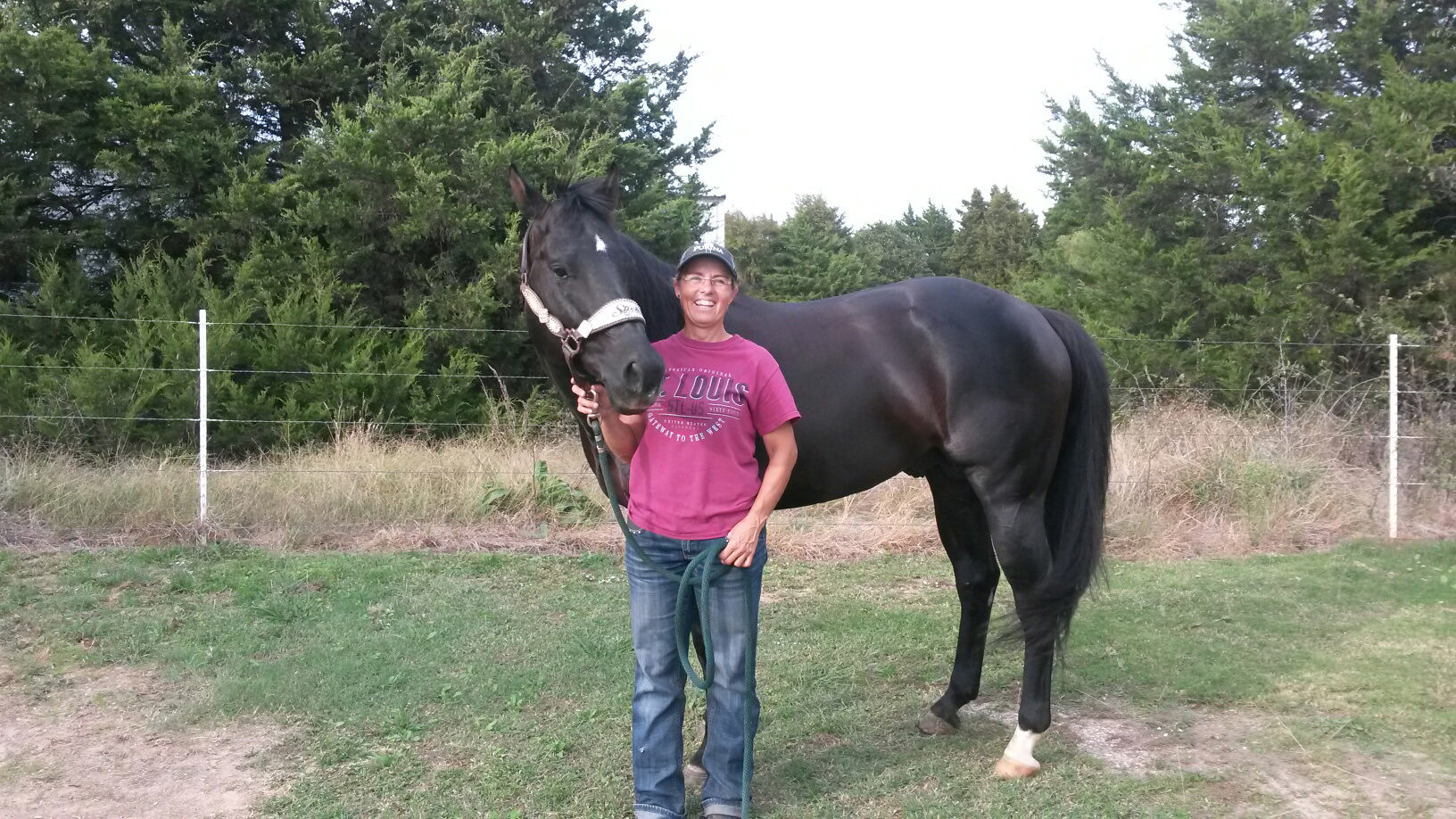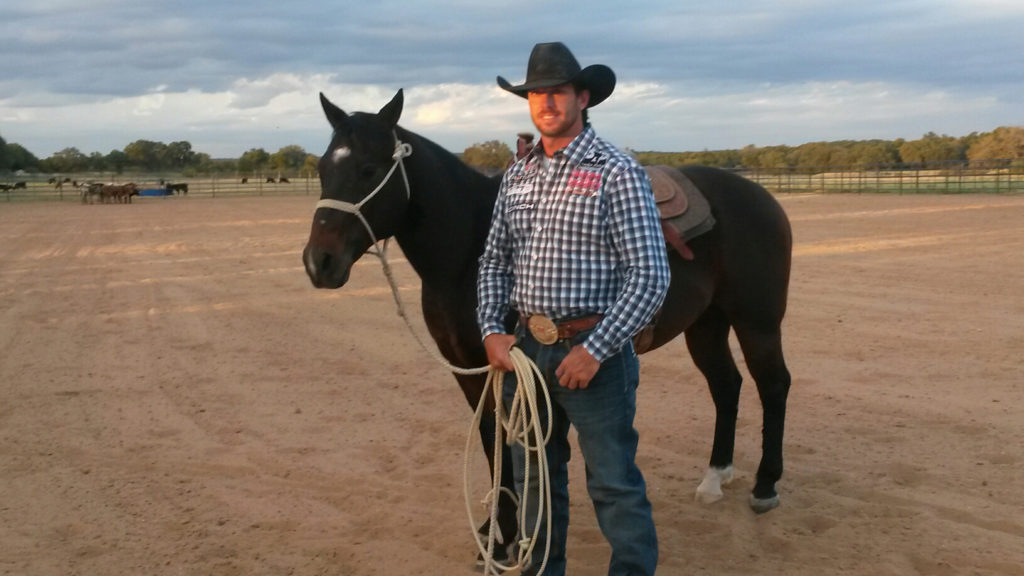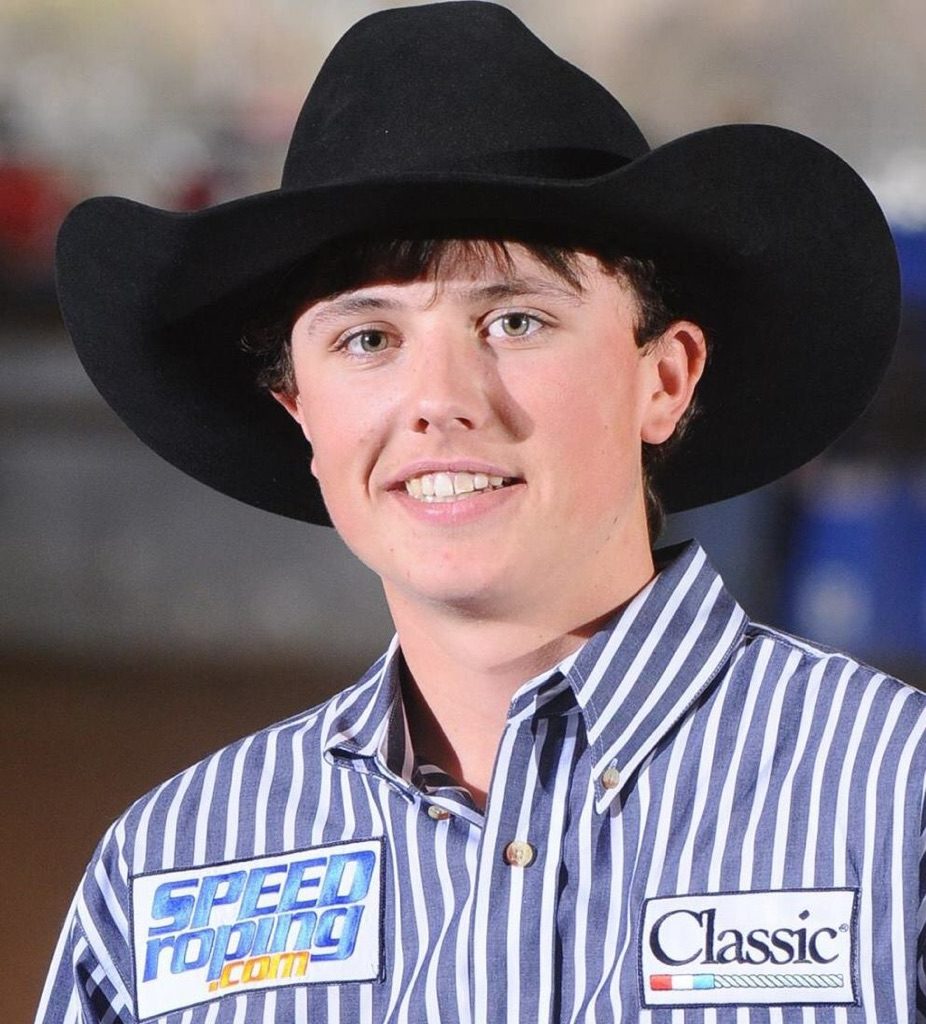Equine
NFR Bound – Prepping for 10 Grueling Rounds

By Janis Blackwell
It is that time of year again when the best in the rodeo business head to Las Vegas to pit their skills against the 14 other qualifiers in each of their respective events. For most of us, we’ll never know first-hand what competition at that level is like or what it involves to get to that level, but through the gracious willingness of four of this year’s qualifiers to share a little of their stories, we can learn more about what it takes to get there and be ready to perform to the maximum of your ability in the ten grueling rounds of the Wrangler National Finals.
This month I interviewed Cade Swor, calf roper and six time NFR qualifier from Chico, Texas; Michele McCloud, barrel racer and four time NFR qualifier from Whitesboro, Texas; Luke Brown, team roping header and nine time NFR qualifier from Stephenville, Texas; and Wesley Thorp, team roping heeler and first time NFR qualifier from Stephenville, Texas, to learn how they prepare themselves physically and mentally and how they prepare their equine partners as well.
Some of the practices and philosophies of these champions in how best to get themselves and their horses in shape are the same or very similar, and in other areas they differ significantly. Starting with physical conditioning of themselves, it was interesting to learn that none of these competitors hit the gym to get or keep in shape. Every one of them stated that just practicing and exercising their horses were the best forms of exercise to keep them in top shape.
For example, Cade Swor said that he thought what helped him most in his preparation for the calf roping was to make a lot of runs just running down the rope, flanking and tying. For those who might not know, that just means a calf is on the end of a rope the length of his calf rope but it is tied to a post. The roper runs from the post to the calf, flanks and ties the calf down—very physically demanding on the roper. Swor feels he is accomplishing the conditioning needed while perfecting his skills. In his words, he is using the same muscles in conditioning that he will use in competition, better than anything the gym could offer. In addition, he rides and exercises his horse and does tie a few down daily, but on practice horses. He doesn’t believe in running lots and lots of cattle and burning himself or his horse out.
To read more pick up a copy of the December 2016 NTFR issue. To subscribe call 940-872-5922.
Equine
The Cowboy Culture

By Phillip Kitts
The mystique and imagined glory of the rodeo road call many young people’s names. As they grow up, they watch the greats of the sport run from rodeo to rodeo and occasionally land on the television giving the perception of the rockstar lifestyle.
No, the glory of the rodeo road is not as grand as, say, the National Football League or the National Basketball Association, but being an athlete competing in front of the yellow chutes of Vegas is just as big a deal, and in every way, can be compared to competing in a Super Bowl.
However, things sure are different in the rodeo world. Let us take a minute and talk about what seem to be simple things in life that impact rodeo and rodeo athletes that in no way would make a difference to the big-money sports.
To read more, pick up a copy of the April issue of NTFR magazine. To subscribe by mail, call 940-872-5922.
Equine
The Danger of Lower Limb Wounds of Horses

By Garrett Metcalf, DVM
It is common for horse owners to have a horse with a wound or laceration at some point in their life. Sometimes small lacerations can be perceived as benign, inconsequential problems that do not need immediate veterinary attention and are managed by the owners or trainers initially. Unfortunately, these simple-looking wounds can involve very important anatomical structures that can lead to serious infections that can be life-threatening or, at best career-limiting, for the horse.
Large wounds tend to get all the attention from owners or trainers because when they occur they are so obvious and visually appalling that medical attention is sought almost immediately. Those types of large wounds can be devastating, but they often involve the upper body regions of the horse, which heal better and often don’t involve structures such as joints or tendons.
To read more, pick up a copy of the March issue of NTFR magazine. To subscribe by mail, call 940-872-5922.
Equine
A Rodeo Photographer’s Journey

By Phillip Kitts
Have you ever wondered what the rodeo looks like for contract personnel in the winter?
This month we will look at what the winter months look like from the rodeo photographer’s perspective.
To understand the time and demands that go into a career as a rodeo photographer, let’s start at when the season gets busy. Not all rodeo photographers work the same. There are many varieties in their career field. They can vary from the few weekends here and there to the full-timer who travels more than 30 weekends a year.
The full-timer that spends most of their year working usually hits the road in late winter. Yes, the winter months are slower but the photographer who has cemented themselves into the field usually books a few during late winter.
Rolling into the spring it begins to get busy. Depending on the photographer, spring can start with an every other weekend type schedule all the way to every weekend through the summer. In 2023 there were photographers that had 20-plus weeks straight going from rodeo to rodeo.
When late fall rolls in things begin to slow down, even for the go-getter who books everything they can.
To read more, pick up a copy of the March issue of NTFR magazine. To subscribe by mail, call 940-872-5922.
-

 Country Lifestyles1 year ago
Country Lifestyles1 year agoScott & Stacey Schumacher: A Growth Mindset
-

 Equine7 months ago
Equine7 months agoThe Will to Win
-

 Country Lifestyles7 years ago
Country Lifestyles7 years agoStyle Your Profile – What your style cowboy hat says about you and new trends in 2017
-

 Country Lifestyles4 years ago
Country Lifestyles4 years agoAmber Crawford, Breakaway Roper
-

 HOME7 years ago
HOME7 years agoGrazing North Texas – Wilman Lovegrass
-

 Country Lifestyles7 years ago
Country Lifestyles7 years agoDecember 2016 Profile, Rusty Riddle – The Riddle Way
-

 Country Lifestyles8 years ago
Country Lifestyles8 years agoJune 2016 Profile – The man behind the mic: Bob Tallman
-

 Outdoor9 years ago
Outdoor9 years agoButtercup or Primrose?









